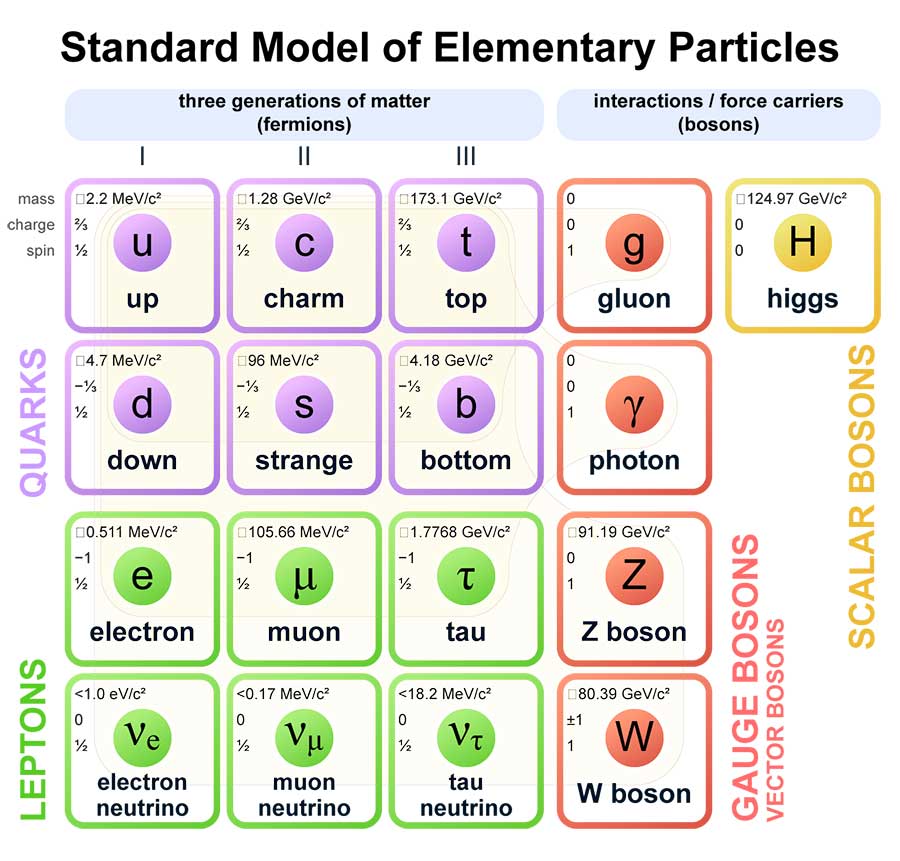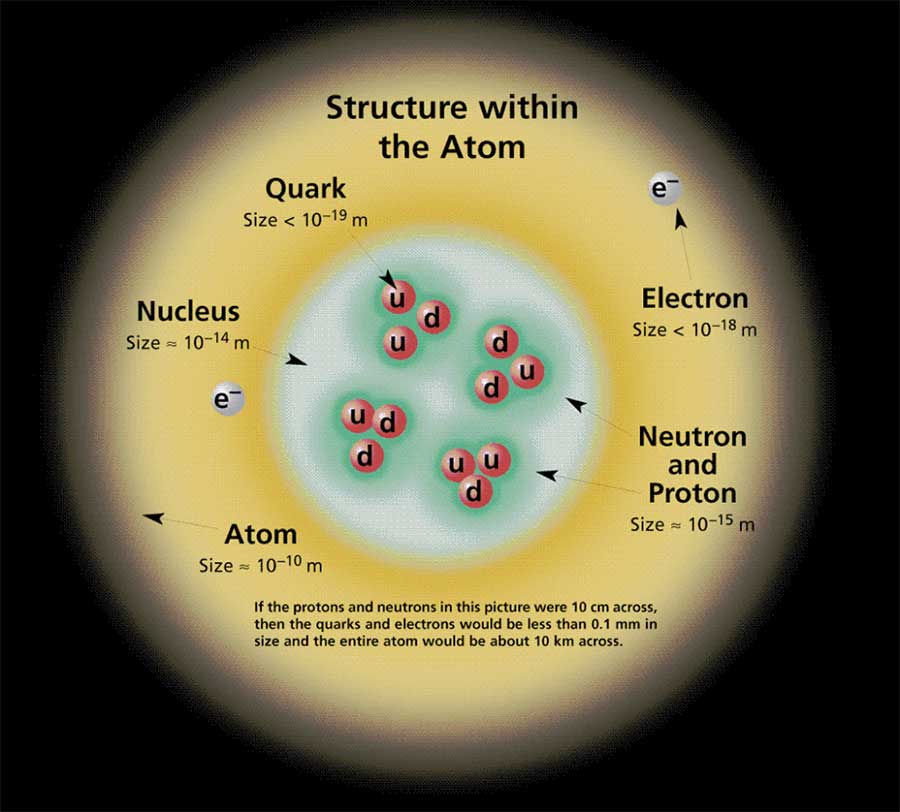 Normal Matter and Quarks
Normal Matter and Quarks
A brief explanation of normal matter, quarks, and
the Standard Model of Particle Physics
 Normal Matter and Quarks
Normal Matter and Quarks
A brief explanation of normal matter, quarks, and the Standard Model of Particle Physics

MQN Guide
Much like GPS guides one along a pathway to a destination, we present 8 “waypoints” of relevant information to guide readers through the overall concept.
Peer Reviewed Science
Is there solid science supporting Magnetized Quark Nuggets as a candidate for dark matter?
Dark Matter
Tell me about dark matter and the Standard Model of Cosmology.
Normal Matter and Quarks
Tell me about normal matter, quarks, and the Standard Model of Particle Physics.
Quark Nuggets and Magnetar Pulsars
What do Magnetar Pulsars have to do with Quark Nuggets?
Aggregation vs. Decay
Since Quark Nuggets are not observed in high-energy accelerator experiments, aren’t they excluded as stable particles and therefore cannot be dark matter?
Detection
If MQNs exist, how can they be detected and have they been detected?
Capture
Since MQNs should be indestructible, can their passage through the Sun slow them down enough to make them collectable?
Applications
If MQNs can be collected, what applications might they enable?

People Make Progress
Quarks are essential parts of the Standard Model of Particle Physics,[1] the very successful theory of particles and fields that explains the workings of the universe. The Standard Model equivalent of the familiar periodic table of chemical elements is shown below. There are six types of quarks: Up, Down, Top, Bottom, Charm, and Strange shown in purple.

Normal matter is composed of neutrons and protons. Protons have two Up and one Down quark. Neutrons have two Down and one Up quark as illustrated in the image of a helium atom.

Image credit: The Standard Model of Particle Physics: A Lunchbox’s Guide by Dave Fehling
MQN Guide
Much like GPS guides one along a pathway to a destination, we present 8 “waypoints” of relevant information to guide readers through the overall concept.
Peer Reviewed Science
Is there solid science supporting Magnetized Quark Nuggets as a candidate for dark matter?
Dark Matter
Tell me about dark matter and the Standard Model of Cosmology.
Normal Matter and Quarks
Tell me about normal matter, quarks, and the Standard Model of Particle Physics.
Quark Nuggets and Magnetar Pulsars
What do Magnetar Pulsars have to do with Quark Nuggets?
Aggregation vs. Decay
Since Quark Nuggets are not observed in high-energy accelerator experiments, aren’t they excluded as stable particles and therefore cannot be dark matter?
Detection
If MQNs exist, how can they be detected and have they been detected?
Capture
Since MQNs should be indestructible, can their passage through the Sun slow them down enough to make them collectable?
Applications
If MQNs can be collected, what applications might they enable?

People Make Progress
Quarks are essential parts of the Standard Model of Particle Physics,[1] the very successful theory of particles and fields that explains the workings of the universe. The Standard Model equivalent of the familiar periodic table of chemical elements is shown below. There are six types of quarks: Up, Down, Top, Bottom, Charm, and Strange shown in purple.

Normal matter is composed of neutrons and protons. Protons have two Up and one Down quark. Neutrons have two Down and one Up quark as illustrated in the image of a helium atom.

Image credit: The Standard Model of Particle Physics: A Lunchbox’s Guide by Dave Fehling
Quarks are essential parts of the Standard Model of Particle Physics,[1] the very successful theory of particles and fields that explains the workings of the universe. The Standard Model equivalent of the familiar periodic table of chemical elements is shown below. There are six types of quarks: Up, Down, Top, Bottom, Charm, and Strange shown in purple.

Normal matter is composed of neutrons and protons. Protons have two Up and one Down quark. Neutrons have two Down and one Up quark as illustrated in the image of a helium atom.

Image credit: The Standard Model of Particle Physics: A Lunchbox’s Guide by Dave Fehling
MQN Guide
Much like GPS guides one along a pathway to a destination, we present 8 “waypoints” of relevant information to guide readers through the overall concept.
Peer Reviewed Science
Is there solid science supporting Magnetized Quark Nuggets as a candidate for dark matter?
Dark Matter
Tell me about dark matter and the Standard Model of Cosmology.
Normal Matter and Quarks (above)
Tell me about normal matter, quarks, and the Standard Model of Particle Physics.
Quark Nuggets and Magnetar Pulsars
What do Magnetar Pulsars have to do with Quark Nuggets?
Aggregation vs. Decay
Since Quark Nuggets are not observed in high-energy accelerator experiments, aren’t they excluded as stable particles and therefore cannot be dark matter?
Detection
If MQNs exist, how can they be detected and have they been detected?
Capture
Since MQNs should be indestructible, can their passage through the Sun slow them down enough to make them collectable?
Applications
If MQNs can be collected, what applications might they enable?


